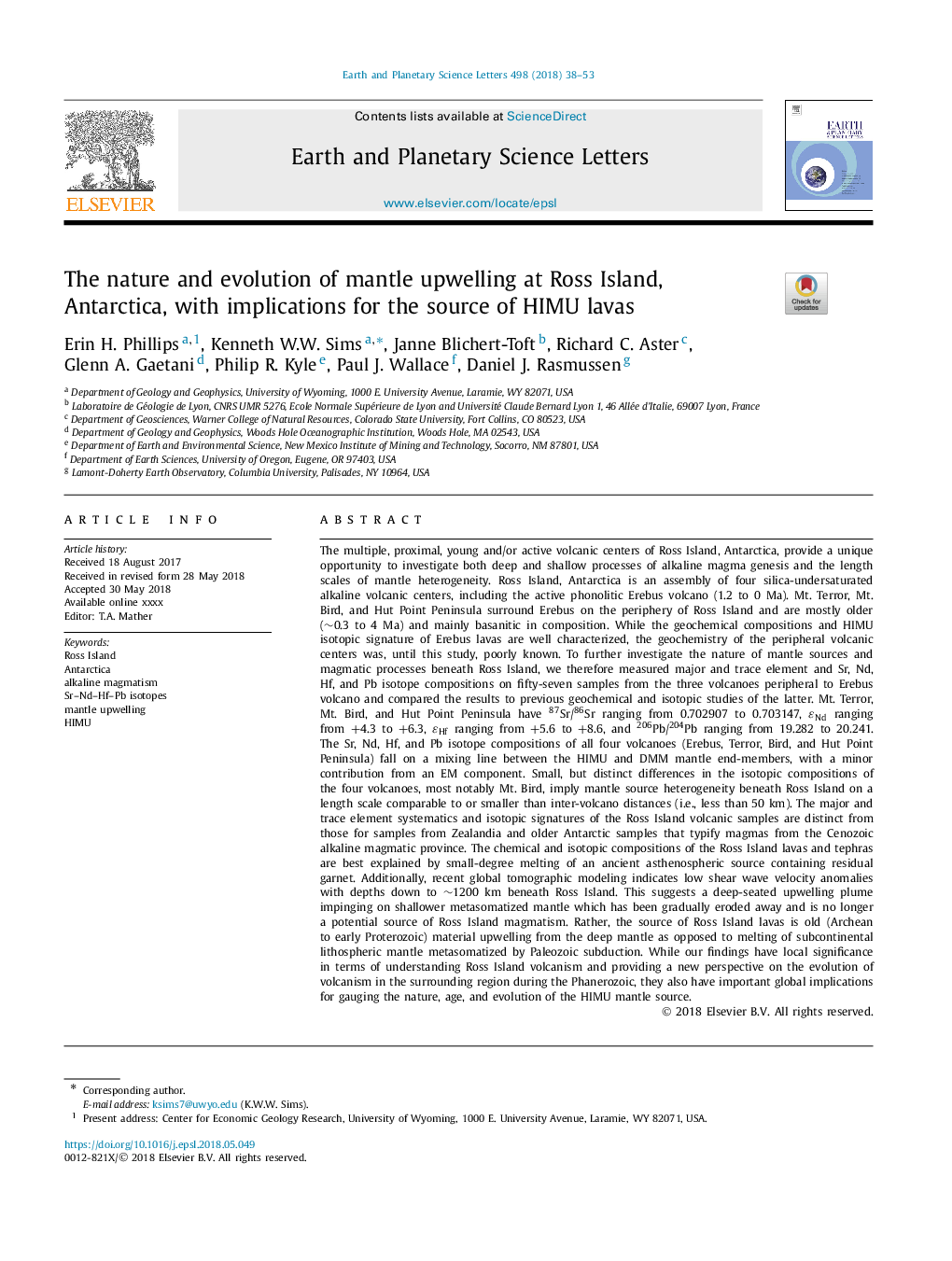| کد مقاله | کد نشریه | سال انتشار | مقاله انگلیسی | نسخه تمام متن |
|---|---|---|---|---|
| 8906705 | 1634658 | 2018 | 16 صفحه PDF | دانلود رایگان |
عنوان انگلیسی مقاله ISI
The nature and evolution of mantle upwelling at Ross Island, Antarctica, with implications for the source of HIMU lavas
دانلود مقاله + سفارش ترجمه
دانلود مقاله ISI انگلیسی
رایگان برای ایرانیان
کلمات کلیدی
موضوعات مرتبط
مهندسی و علوم پایه
علوم زمین و سیارات
علوم زمین و سیاره ای (عمومی)
پیش نمایش صفحه اول مقاله

چکیده انگلیسی
The multiple, proximal, young and/or active volcanic centers of Ross Island, Antarctica, provide a unique opportunity to investigate both deep and shallow processes of alkaline magma genesis and the length scales of mantle heterogeneity. Ross Island, Antarctica is an assembly of four silica-undersaturated alkaline volcanic centers, including the active phonolitic Erebus volcano (1.2 to 0 Ma). Mt. Terror, Mt. Bird, and Hut Point Peninsula surround Erebus on the periphery of Ross Island and are mostly older (â¼0.3 to 4 Ma) and mainly basanitic in composition. While the geochemical compositions and HIMU isotopic signature of Erebus lavas are well characterized, the geochemistry of the peripheral volcanic centers was, until this study, poorly known. To further investigate the nature of mantle sources and magmatic processes beneath Ross Island, we therefore measured major and trace element and Sr, Nd, Hf, and Pb isotope compositions on fifty-seven samples from the three volcanoes peripheral to Erebus volcano and compared the results to previous geochemical and isotopic studies of the latter. Mt. Terror, Mt. Bird, and Hut Point Peninsula have 87Sr/86Sr ranging from 0.702907 to 0.703147, εNd ranging from +4.3 to +6.3, εHf ranging from +5.6 to +8.6, and 206Pb/204Pb ranging from 19.282 to 20.241. The Sr, Nd, Hf, and Pb isotope compositions of all four volcanoes (Erebus, Terror, Bird, and Hut Point Peninsula) fall on a mixing line between the HIMU and DMM mantle end-members, with a minor contribution from an EM component. Small, but distinct differences in the isotopic compositions of the four volcanoes, most notably Mt. Bird, imply mantle source heterogeneity beneath Ross Island on a length scale comparable to or smaller than inter-volcano distances (i.e., less than 50 km). The major and trace element systematics and isotopic signatures of the Ross Island volcanic samples are distinct from those for samples from Zealandia and older Antarctic samples that typify magmas from the Cenozoic alkaline magmatic province. The chemical and isotopic compositions of the Ross Island lavas and tephras are best explained by small-degree melting of an ancient asthenospheric source containing residual garnet. Additionally, recent global tomographic modeling indicates low shear wave velocity anomalies with depths down to â¼1200 km beneath Ross Island. This suggests a deep-seated upwelling plume impinging on shallower metasomatized mantle which has been gradually eroded away and is no longer a potential source of Ross Island magmatism. Rather, the source of Ross Island lavas is old (Archean to early Proterozoic) material upwelling from the deep mantle as opposed to melting of subcontinental lithospheric mantle metasomatized by Paleozoic subduction. While our findings have local significance in terms of understanding Ross Island volcanism and providing a new perspective on the evolution of volcanism in the surrounding region during the Phanerozoic, they also have important global implications for gauging the nature, age, and evolution of the HIMU mantle source.
ناشر
Database: Elsevier - ScienceDirect (ساینس دایرکت)
Journal: Earth and Planetary Science Letters - Volume 498, 15 September 2018, Pages 38-53
Journal: Earth and Planetary Science Letters - Volume 498, 15 September 2018, Pages 38-53
نویسندگان
Erin H. Phillips, Kenneth W.W. Sims, Janne Blichert-Toft, Richard C. Aster, Glenn A. Gaetani, Philip R. Kyle, Paul J. Wallace, Daniel J. Rasmussen,